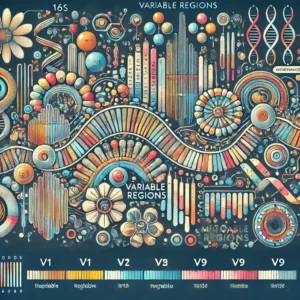🧬 MR DNA – Your Partner for Microbiome, Metagenome, Genome, and RNAseq Sequencing
Accurate. Affordable. Trusted by Researchers Worldwide.
At MR DNA, we are leaders in next-generation sequencing (NGS) and advanced microbial analysis, offering a full suite of services including microbiome profiling, shotgun metagenomics, whole genome sequencing, and RNAseq.
Whether you’re studying complex microbial communities, discovering novel organisms, or exploring gene expression, MR DNA delivers the quality and support your research deserves.
🔬 Comprehensive Sequencing Services
We specialize in high-throughput sequencing and analysis for a wide range of applications:
🦠 Microbiome Sequencing
-
16S rRNA, 18S, and ITS amplicon sequencing
-
Gut, oral, vaginal, skin, environmental, and more
-
Alpha/beta diversity, taxonomy, and interactive reports
-
Supports clinical, agricultural, and environmental studies
🌍 Shotgun Metagenomics
-
Complete community profiling (bacteria, viruses, fungi, archaea)
-
Functional gene prediction (e.g., HUMAnN, KEGG pathways)
-
Host DNA depletion available
-
Ideal for soil, water, clinical, and built environments
🧬 Whole Genome Sequencing
-
Bacterial, fungal, viral, and eukaryotic genome sequencing
-
De novo assembly and annotation
-
PacBio and Illumina options for short and long reads
-
Fast turnaround with optional biostatistical reports
🧪 RNAseq and Transcriptomics
-
Total RNA or mRNA sequencing
-
Differential gene expression analysis
-
Isoform-level resolution (short-read and long-read options)
-
Suitable for model organisms, pathogens, and mixed samples
⚡ Why Choose MR DNA?
-
✅ Over a decade of experience in microbial genomics
-
✅ Trusted by universities, hospitals, and biotech companies worldwide
-
✅ Rapid turnaround and transparent pricing
-
✅ In-house bioinformatics and biostatistics experts
-
✅ Clean, publication-ready reports and figures
📈 Deliverables Include:
-
High-quality FASTQ files
-
Taxonomic and functional profiles
-
Genome assemblies and annotations
-
Differential expression matrices
-
Data visualization (heatmaps, PCA, diversity plots)
🧠 Expert Support from Start to Finish
We don’t just sequence — we help you design better experiments. Our team of scientists is available to guide:
-
Sample selection and extraction
-
Library prep strategy
-
Platform choice (Illumina, PacBio)
-
Downstream data interpretation
Whether you’re running a small pilot or a multi-site clinical trial, MR DNA is your partner in precision microbiology.
📞 Ready to Get Started?
Explore the power of microbiome, metagenome, genome, and RNAseq sequencing with a team that understands your science.
📧 Email: info@mrdnalab.com
📞 Call: 1-806-789-7984
👉 Request a Quote
🌐 Visit: www.mrdnalab.com
🔑 SEO Keywords Embedded:
-
microbiome sequencing provider
-
shotgun metagenomics service
-
bacterial genome sequencing
-
RNAseq analysis service
-
low-cost microbial sequencing
-
MR DNA sequencing lab
-
NGS for metagenomics and transcriptomics

